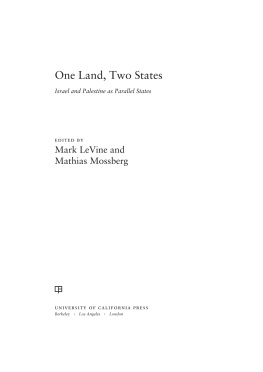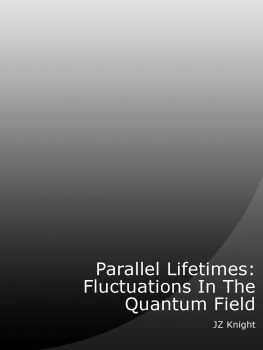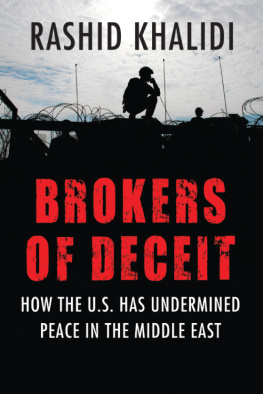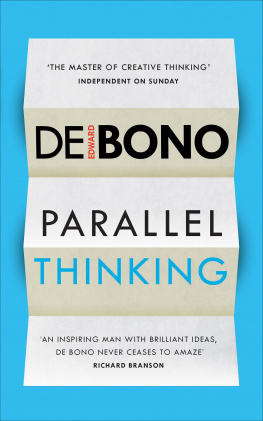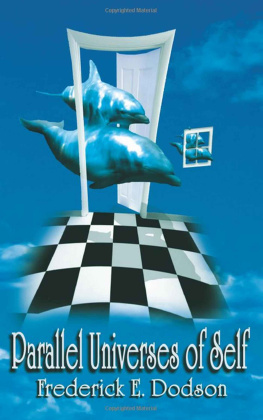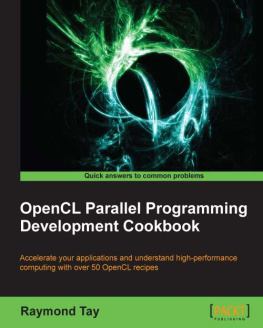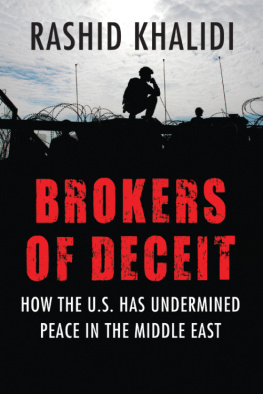Praise for One Land, Two States
The Parallel States concept to resolve the Palestinian-Israeli conflict is the most daring and intriguing new idea for a permanent peace that has come along in two generations of failed negotiations. It deserves very serious consideration by all interested parties, because in its entirety or in some of its component elements it could spark a more productive new path to peace, justice, and coexistence.
Rami G. Khouri, Director, Issam Fares Institute for Public Policy and International Affairs, American University of Beirut, and syndicated columnist for Agence Global and the Daily Star
You may call it fantasy, daydreaming, or utopia. But isnt this what Herzl faced too? When those who are preoccupied with the conventional two-state solution are being called obsessive, this book offers a new, fascinating, innovative approach with different tools to solve the same old problem for the same people. Wanted! Two brave leaders to take up the challenge.
Arad Nir, Foreign Affairs Editor, Channel 2 News, Israel
The Parallel States Project is a vision aimed at shattering the accepted conventions regarding the political solution of the Israeli-Palestinian conflict. What it is in fact is an attempt to square the circle. It will take the political world, which has come up against one failure after another in its efforts to advance peace among the peoples living in the Holy Land, some time to digest the concept. Ultimately, there is quite a good chance that the idea of a functional partition will trickle down to the peoples and their leaders and offer the formula that will finally lead to conciliation and peace.
Israel Harel, chairman and founder of Yesha Council, head of the Institute for Zionist Strategies, columnist for Haaretz , and participant in the Parallel States Project
One Land, Two States
One Land, Two States
Israel and Palestine as Parallel States
EDITED BY
Mark LeVine and
Mathias Mossberg

UNIVERSITY OF CALIFORNIA PRESS
Berkeley Los Angeles London
University of California Press, one of the most distinguished university presses in the United States, enriches lives around the world by advancing scholarship in the humanities, social sciences, and natural sciences. Its activities are supported by the UC Press Foundation and by philanthropic contributions from individuals and institutions. For more information, visit www.ucpress.edu.
University of California Press
Berkeley and Los Angeles, California
University of California Press, Ltd.
London, England
2014 by Mark LeVine and Mathias Mossberg
Library of Congress Cataloging-in-Publication Data
One land, two states : Israel and Palestine as parallel states / edited by Mark LeVine and Mathias Mossberg.
p. cm.
Includes bibliographical references and index.
ISBN 978-0-520-27912-4 (cloth : alk. paper)
ISBN 978-0-520-27913-1 (pbk. : alk. paper)
ISBN 978-0-520-95840-1 (ebook)
1. Arab-Israeli conflict1993Peace. I. LeVine, Mark, 1966 II. Mossberg, Mathias.
DS119.76.O54 2014
956.94054dc23
2013040123
Manufactured in the United States of America
23 22 21 20 19 18 17 16 15 14
10 9 8 7 6 5 4 3 2 1
In keeping with a commitment to support environmentally responsible and sustainable printing practices, UC Press has printed this book on Natures Natural, a fiber that contains 30% post-consumer waste and meets the minimum requirements of ANSI/NISO Z 39.481992 ( R 1997) ( Permanence of Paper ).
Contents
Mathias Mossberg and Mark LeVine
lvaro de Soto
Mathias Mossberg
Jens Bartelson
Peter Wallensteen
Nimrod Hurvitz and Dror Zeevi
Hussein Agha and Ahmad Samih Khalidi
Raja Khalidi
Raphael Bar-El
Various authors, compiled by Mathias Mossberg
Mark LeVine and Liam OMara IV
Hiba Husseini
Eyal Megged
Illustrations
MAPS
1.1.
1.2.
TABLES
3.1.
3.2.
3.3.
3.4.
6.1.
6.2.
Preface
MATHIAS MOSSBERG AND MARK LEVINE
This volume analyzes the possibility and feasibility of establishing two parallel states, Israel and Palestine, on the same territory, the land between the Mediterranean and the Jordan River. Two state structures exercising sovereignty over the same piece of land is an idea that has not previously been explored in the context of the Israeli-Palestinian conflictor almost any other setting, for that matter. At the heart of such a political arrangement is the still-novel idea of states responding primarily to their citizens, and only secondarily to their territory. In such a scenario, state structures would be separate and independent, but would have to take each other into account in most if not all major policy decisions and their broader function. Sovereignty over the broader territory would be both divided and shared between the two governing authorities and the bodies politic they represent.
This study, and the project it grew out of, is a provocation against conventional thinking, against the Middle East peace process as we know it, and against the main actors in the region and outside. The aim is not to provoke for the sake of provoking, but to study new thoughts and ideas that can contribute to opening a way forward toward a truly just and lasting peace between Palestinians and Israelis. The study is also a provocation against established understandings of concepts such as sovereignty and state and against some of the most fundamental principles of international law the way we are accustomed to interpreting it.
As we write these lines, the peace process, which has now lasted for more than thirty years, has not yielded any results that can constitute a solid foundation for an end to conflict, or even building stones for such a foundation. Many observers have come to question whether there was ever any intention, at least on the part of some actors, to achieve results, or the peace process was instead meant to deflect interest and energy, not least the interest and energy of the international community, while the decisive action of the conflict was taking place on the ground and outside the limelight.
Our ideas are thus designed not merely as an alternative to the reality of deadlock and bleak prospects for progress that have for so long characterized the peace process. Even in the event that the process reaches fruition and produces a final status agreement that includes the creation of some sort of Palestinian state (as this book enters production, Israeli and Palestinian diplomats have just met for the first time in three years in Washington, D.C., ostensibly toward that end), we believe the conventional notions of dividing sovereignty territorially likely cannot support the long-term viability of either an independent and autonomous Palestinian state, or a healthy and productive relationship between two states divided so within the territory of historical Palestine/Eretz Yisrael. A truly just and lasting peace between Jews and Palestiniansthe only kind that can ensure security and development for both peopleswill require a new political architecture and even a new system of thought and interaction, one that ensures both the greatest possible autonomy and the fairest and most flexible level of integration and mutual support.
PROVOKING THE EXPECTED
We anticipate that the concepts discussed in this book could enter into the already rich debates about the contents of metaconcepts such as sovereignty and territoriality, yet our main ambition is not to contribute to the development of theory in the areas we are engaging. On the contrary, this study is an attempt to focus on a specific conflict in all its particularities and to address this conflict in a new way that is specific to its histories and present dynamics. Nevertheless, we hope and believe that the ideas discussed here have the potential to be applied to other territorial conflictskin the Middle East and elsewherethat remain unresolvable within the traditional, territorially grounded nation-state framework.

